Syn.: Iris cupraea Pursh, Iris ecristata Alexander, Iris fulvaurea Small, Iris rubescens Raf., Limniris fulva (Ker Gawl.) Rodion., Neubeckia fulva (Ker Gawl.) Alef.
Family: Iridaceae Juss.
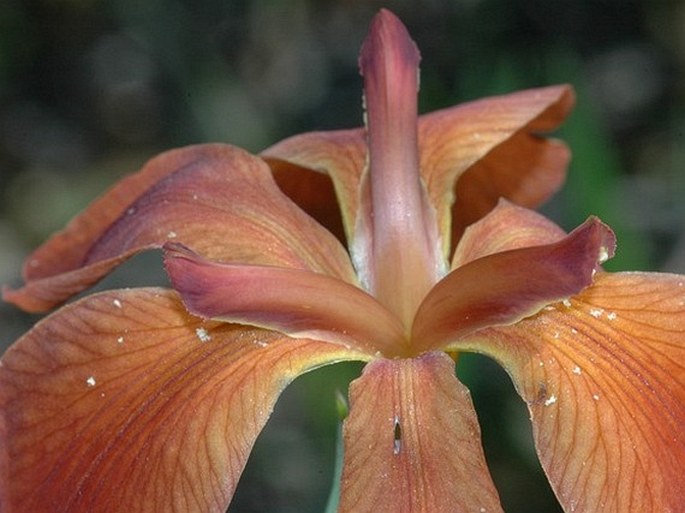
Distribution: North American species with primary occurrence along western banks of Mississippi River, rarer in eastern side, from Illinois to Louisiana.
Ecology: Low wet areas and shallow water. Blooms from April to June.
Description: Perennial herb, 30–90 cm tall, from greenish brown, sometimes reddish, branched rhizomes, with scars of old leaves. Stem simple or 1–2-branched; basal leaves 60–100 × 1.5–2.5 cm, arching from stem, widely spreading, bright green, lightly ribbed. Inflorescence 1–2-flowered; spathes unequal, outer green, 10–12 cm, inner 6-8 cm. Flower perianth copper coloured; floral tube hollow to ovary, 2–2.5 cm; outer perianth segments widely spreading or arching downward, obovate, 1–3 prominent veins, 4.5–5.5 cm; inner perianth segments spreading or declining with outer segments, 4–5 × 1.5–2 cm, deeply notched at the tip; ovary green, hexagonal, 1.5–1.7 cm; style convex, 1.8–2 cm, crests reflexed, margins shallowly toothed; stigmas 2-lobed; pedicel 2–4 cm. Fruit is a capsule, green, short beak, 4.5–8 × 2.5 cm; seeds in 2 rows per locule, flattened, 10–15 mm.
Threat and protection: Listed as endangered in the states of Kentucky and Tennessee.
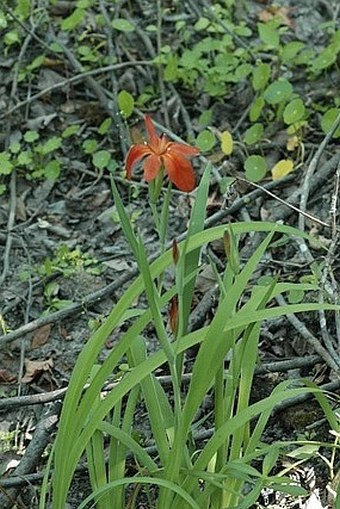
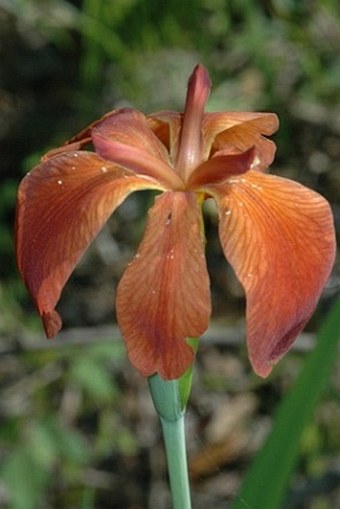
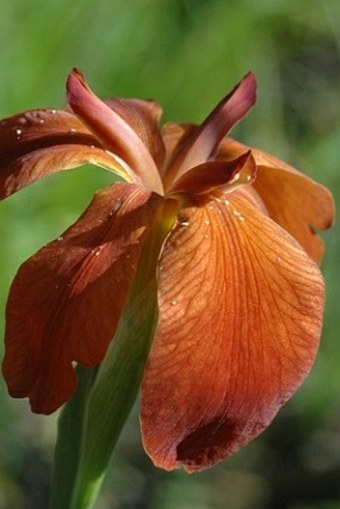
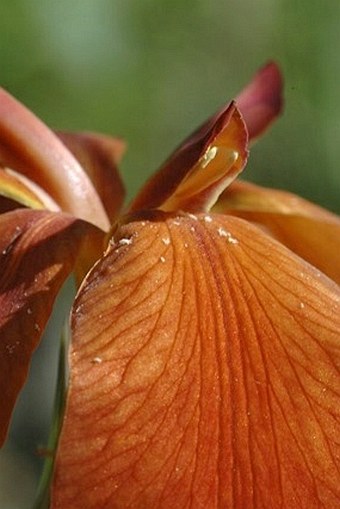
These images were taken in USA, Louisiana, Jean Lafitte National Park (by Philip Bergmann, April 2006).


